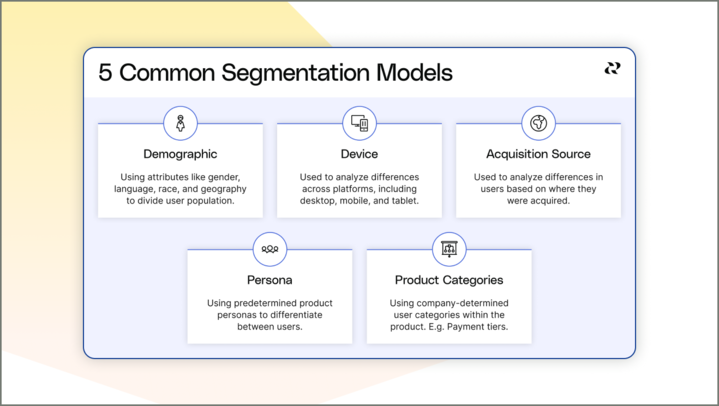Solar Innovations and Trends
Your source for the latest in solar technology and energy solutions.
Player Segmentation Research: Decoding the Game Within the Game
Unlock the secrets of player segmentation! Discover how understanding gaming behavior can elevate your game strategy and boost engagement.
Understanding Player Personas: The Key to Effective Game Design
Understanding player personas is crucial in the realm of game design as they serve as a foundation for creating engaging and immersive experiences. By categorizing players into distinct profiles based on their preferences, motivations, and gaming habits, developers can tailor their games to meet specific audience needs. For example, action-oriented players may thrive on fast-paced gameplay and competitive settings, while story-driven players often seek rich narratives and character development. This diversity in gaming styles highlights the importance of recognizing and accommodating different player personas in the design process.
To effectively utilize player personas, developers can follow a structured approach that involves conducting player research, analyzing player feedback, and creating detailed persona profiles. These profiles should include key information such as preferred genres, playing habits, and motivation factors. By understanding what drives players, game designers can craft mechanics and narratives that resonate deeply with their target audiences. Ultimately, a clear understanding of player personas not only enhances user engagement but also leads to more successful game releases.

Counter-Strike is a popular team-based first-person shooter game, where players join either the Terrorist or Counter-Terrorist side to complete objectives. Many players enhance their gaming experience with various promotions, such as the roobet promo code that can offer exciting bonuses. This game has evolved over the years, with different versions such as CS:GO drawing millions of players and hosting competitive tournaments worldwide.
How Player Segmentation Enhances User Engagement: Insights and Strategies
Player segmentation is a vital strategy in the gaming industry that allows developers to tailor experiences to different user demographics. By analyzing player behavior, preferences, and habits, game developers can create targeted marketing campaigns and personalized gaming experiences. This approach not only enhances user satisfaction but also increases retention rates, as players are more likely to engage with content that resonates with their individual gaming styles. According to recent studies, games that implement effective player segmentation see a significant boost in both user engagement and overall revenue.
To effectively implement player segmentation, developers can utilize a variety of strategies such as data analysis, player feedback, and in-game behavior tracking. For example, creating unique content for different segments, such as casual players versus competitive gamers, can cater to their specific needs. Additionally, utilizing tools like A/B testing can help determine which strategies are most effective in enhancing player engagement. By continuously analyzing the data and adapting to player feedback, developers can ensure that their games remain relevant and enjoyable, ultimately leading to a loyal user base.
What Are the Different Types of Gamers? A Deep Dive into Player Profiles
When exploring the diverse landscape of gaming, it's essential to recognize the various types of gamers that inhabit this digital universe. Generally, these players can be categorized into profiles based on their gaming habits, preferences, and motivations. For instance, casual gamers tend to play for fun and relaxation, often engaging with games that are easy to pick up and play, such as mobile games or simple puzzle games. On the other hand, hardcore gamers dedicate significant time to gaming, often gravitating towards complex and competitive titles that require in-depth strategies and skills.
Furthermore, within these primary categories, we have distinct types of players, such as social gamers who enjoy the community aspect of gaming, often playing multiplayer games to connect with friends and meet new people. In contrast, achievement-oriented gamers focus on completing challenges and earning in-game rewards. Understanding these player profiles not only enhances the gaming experience for developers and marketers but also sheds light on the evolving gaming culture that continues to thrive in today’s digital age.